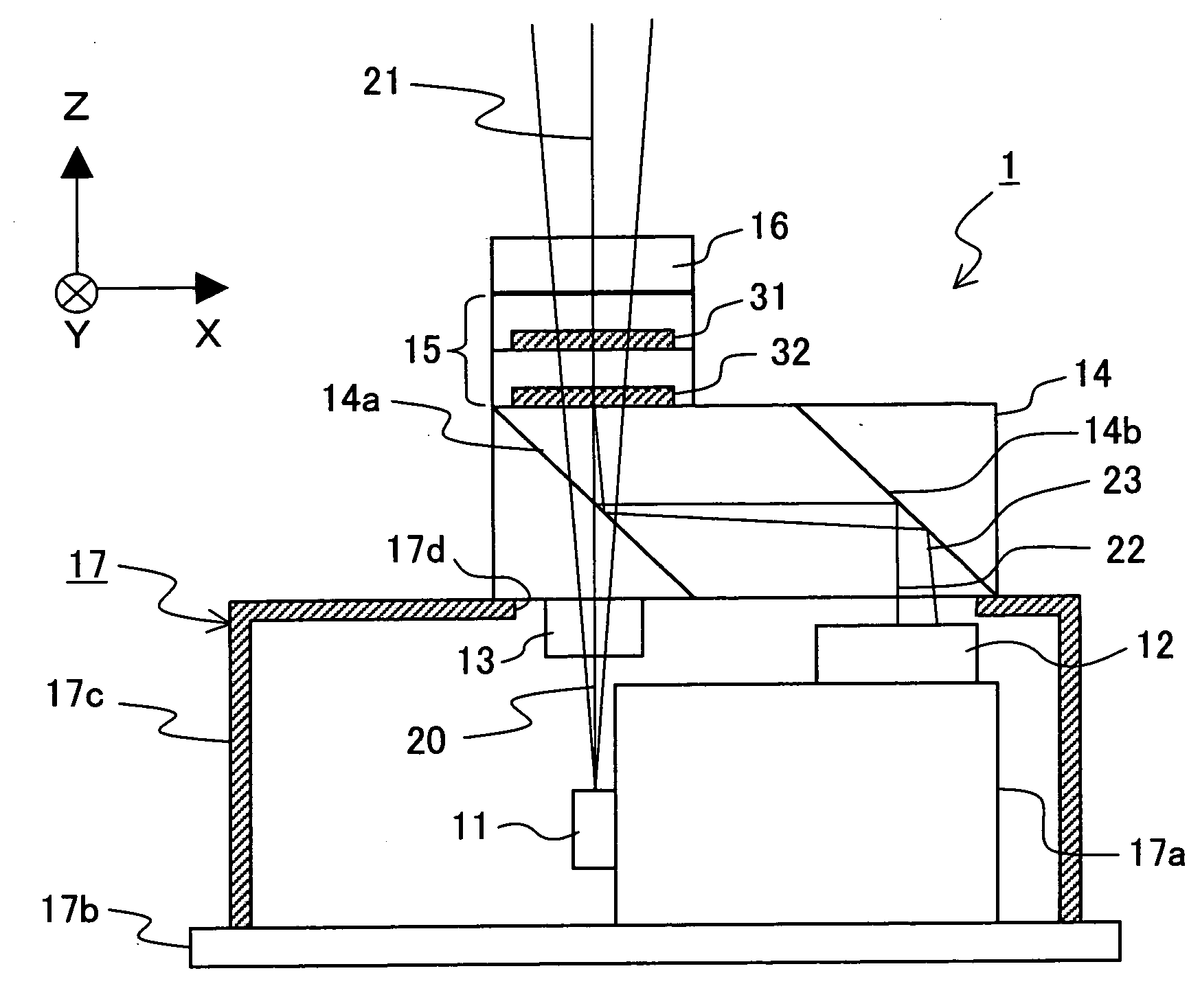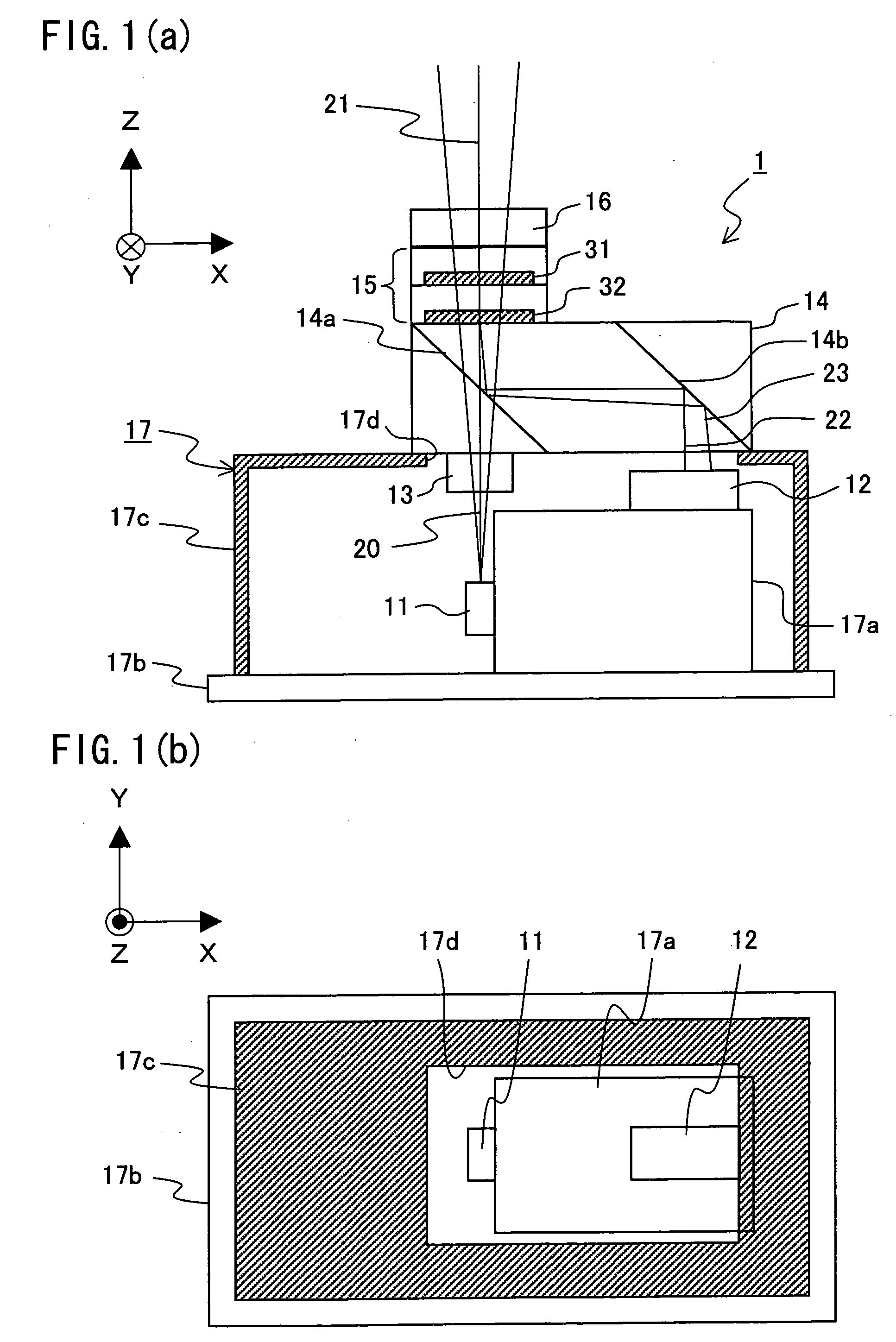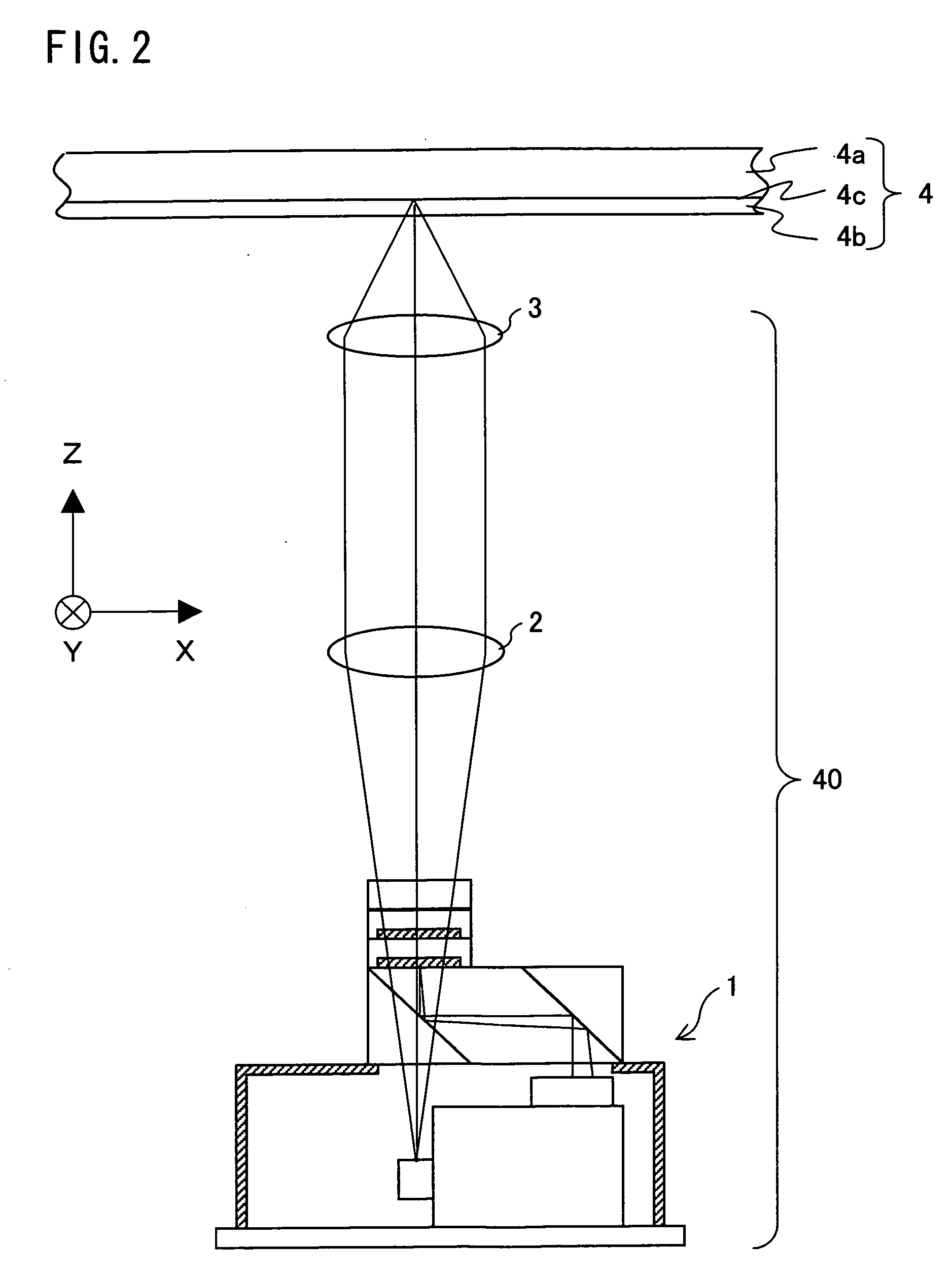Optical integrated unit and optical pickup
a technology of optical pickup and integrated unit, which is applied in the field of optical integrated unit and optical pickup, can solve the problems of conventional optical integrated unit suffering, loss of light amount, and inability to form a fine spot of laser beam on the optical disk, and achieve the effect of minimizing the decrease of light utilization efficiency and recording/reproducing performan
- Summary
- Abstract
- Description
- Claims
- Application Information
AI Technical Summary
Benefits of technology
Problems solved by technology
Method used
Image
Examples
embodiment 1
[0050] One embodiment of the present invention will be described below with reference to FIGS. 1(a) and 1(b) through FIGS. 7(a) and 7(b).
[0051] The present embodiment assumes a case where an optical integrated unit of the present invention is used in an optical pickup provided in an optical information recording / reproducing apparatus for optically recording and reproducing information onto and from an optical disk (optical information recording medium).
[0052]FIG. 2 is a diagram schematically illustrating a structure of an optical pickup 40 using an optical integrated unit of the present embodiment.
[0053] As shown in FIG. 2, the optical pickup 40 includes the optical integrated unit 1, a collimator lens 2, and an objective lens 3.
[0054] In FIG. 2, a light beam emitted from a light source provided in the optical integrated unit 1 is caused to be parallel light beams by the collimator lens 2, and then the parallel light beams are collected on an optical disk 4 by the objective lens...
embodiment 2
[0137] The following description deals with another embodiment of the present invention with reference to FIG. 8(a) and FIG. 8(b). Explained in the present embodiment are differences from Embodiment 1. Therefore, for ease of explanation, materials having the equivalent functions as those shown in the drawings pertaining to Embodiment 1 will be given the same reference symbols, and explanation thereof will be omitted here.
[0138] Each of FIG. 8(a) and FIG. 8(b) is a diagram schematically illustrating a structure of an optical integrated unit of Embodiment 2 of the present invention. FIG. 8(a) is a side view illustrating the optical integrated unit when viewed in the Y direction under conditions that the optical direction is considered as the Z direction shown in FIG. 8(a). FIG. 8(b) is an overhead view illustrating the optical integrated unit when viewed in the optical axis direction (Z direction) shown in FIG. 8(a), i.e., when viewed from the side of the window portion 17d of the ca...
embodiment 3
[0150] The following description deals with still another embodiment of the present invention with reference to FIG. 10. Explained in the present embodiment are differences from Embodiment 1. Therefore, for ease of explanation, materials having the equivalent functions as those shown in the drawings pertaining to Embodiment 1 will be given the same reference symbols, and explanation thereof will be omitted here.
[0151]FIG. 10 is a side view illustrating an optical integrated unit of Embodiment 3 of the present invention when viewed in the Y direction under conditions that the optical direction is considered as the Z direction illustrated in FIG. 10. The optical integrated unit of the present embodiment is different from the optical integrated unit of Embodiment 1 in terms of respective structures of the semiconductor laser 11 and the light receiving element 12.
[0152] Specifically, in Embodiment 1, the semiconductor laser 11 and the light receiving element 12 are provided in the pac...
PUM
 Login to View More
Login to View More Abstract
Description
Claims
Application Information
 Login to View More
Login to View More - R&D
- Intellectual Property
- Life Sciences
- Materials
- Tech Scout
- Unparalleled Data Quality
- Higher Quality Content
- 60% Fewer Hallucinations
Browse by: Latest US Patents, China's latest patents, Technical Efficacy Thesaurus, Application Domain, Technology Topic, Popular Technical Reports.
© 2025 PatSnap. All rights reserved.Legal|Privacy policy|Modern Slavery Act Transparency Statement|Sitemap|About US| Contact US: help@patsnap.com



